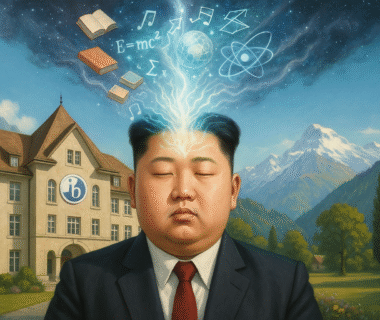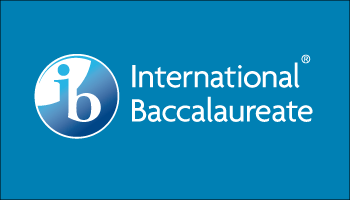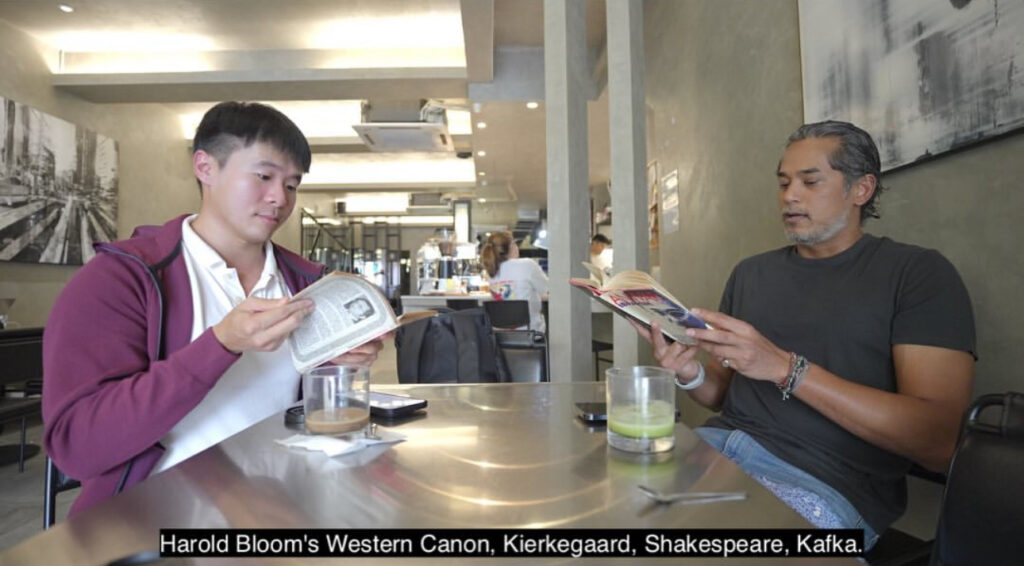Be careful what you wish for, because you may actually get it.
This is one of the things that I constantly say to people who are contemplating the IB and who want to do so because it provides a ‘balanced’ education.
Well yes, it’s ‘balanced’, but do you know what that entails?
Today, let’s explore a little bit of that!
One of the things that almost every IB student yearns for but later regrets is the Internal Assessment.
🧠 What is the IB Economics IA?
The IA is a series of three commentaries, each based on a real-world news article. You’ll write one for each of the main branches of economics:
- Microeconomics
- Macroeconomics
- The Global Economy (trade or development)
Each commentary is capped at 800 words, and you’re expected to:
- Use a news article no more than one year old.
- Analyze the article using relevant economic theory.
- Include at least one diagram.
- Apply your own evaluation (not just description).
It’s internally marked by your teacher and externally moderated by IB, and it counts for 20% of your final grade.
Internal Assessments are, as the wording suggests, internal (they are within your school) and they are assessed (these are not just homework); they contribute 20% of your overall IB grade.
Let’s also observe that this process will take place about one year into the course after you’ve learned a good bit of course material and will also take place alongside the IA process for every single one of your other five subjects while you are trying to desperately complete your CAS (if you hadn’t already) and also your Extended Essay and Theory of Knowledge essay as you revise your one designated draft with your teacher in the knowledge that how well you do will determine your entire grade.
But here’s the truth: the Economics IA doesn’t have to be a nightmare. In fact, it can be one of the most rewarding parts of the course—if you know how to approach it.
Let’s break down everything you need to know. Consider this your friendly survival guide from someone who’s been through the trenches and lived to tell the tale.
🔎 Step 1: Finding the Right Article—The Scavenger Hunt
This is where your IA journey really begins. At first, you may feel like a detective trying to find a clue in a haystack of economic headlines. But trust me—this part is crucial.
Here’s what you want:
✅ The article is recent (published within the last year).
✅ It focuses on a policy (like a tax, subsidy, interest rate change, or trade tariff).
✅ It’s not too technical or long—you want to explain it, not quote it.
✅ There’s room for analysis, application, and evaluation.
The reason that this is crucial is that when you write your commentary, you want to have something that you can effectively comment about, it has to be intellectually interesting and worth talking about, and it has to be a recent matter.
🧠 Pro tip: Use Google News with search terms like “government imposes tax,” “central bank raises interest rate,” or “import tariff Malaysia.” Once you find a good one, screenshot and save it—you don’t want to lose your gold nugget.
🏗️ Step 2: Building the Commentary—Your 800-Word Masterpiece
Think of your commentary like a mini-essay. Here’s a reliable structure to follow:
- Introduction: Briefly summarize the article and define the economic concept(s).
- Theory and Diagram: Explain the relevant theory. Draw and label your diagram.
- Application: Show how the theory applies to the article.
- Evaluation: Weigh the pros and cons. Consider stakeholders. Suggest alternatives. Include short-run vs. long-run effects. CLASPP is a nice guide and acronym (Conclusion, Long term/Short term, Applications, Stakeholders, Priorities, Pros/Cons), but it’s not a good substitute for critical thinking and for understanding how things relate to one another in both broad and narrow aspects; it is very easy to repeat the acronym over and over again; if you are not getting inspiration, take a step back. More on this soon.)
Don’t waste words. Be concise, clear, and logical.
🧠 Pro tip: Your diagram is your best friend. A well-labeled diagram can communicate what 200 words can’t—and yes, it must be fully explained in the text.
👩🏫 Working with Your Teacher—Your IA Wingperson
Your economics teacher isn’t just marking your IA—they’re mentoring you through it.
In most schools, your teacher will:
- Approve your article
- Give feedback on your first draft (IB allows only one round of formal feedback)
- Help clarify the concepts and guide your structure
Let me also say this:
Teachers have a huge role in this process and you want your teacher to be on your side, because that makes all the difference – also, the quality of the teacher and how well they’re organized/how they are able to allocate time is very crucial; it’s clear that the commentary and the feedback process requires individualized attention – imagine what that must be like to deal with if you’re dealing with a class of 30 economics students where each student has one commentary and one round of feedback, which means that there will be 90 separate pieces of feedback that that single teacher has to produce for their students after having read each individual commentary, understood each commentary, and provided guidance on what specifically to improve; imagine that these 30 students each ask for feedback meetings for one hour for their commentaries – that’s 180 hours total on student meetings alone, not even including preparation time for those feedback meetings and the cooldown time after.
Clearly, it is very labor intensive and it’s also one reason why it’s justifiable for IB to be so expensive.
Use your privilege of feedback wisely. Don’t show up with a half-baked idea and hope for a miracle. Instead, prepare your thoughts, show initiative, and be open to rewriting (because you will rewrite)
Make your teacher’s life simple and reason through everything properly – don’t come in with half-hearted preparation, but rather with the attitude that your first draft will be your final draft, and do the very best that you can.
✍️ Writing Tips to Make Your IA Shine
- Define your terms. IB loves clear definitions, and your sepupu does as well. Make sure that people have a clear idea of what you mean when you speak, and ensure that that’s the case by clearly articulating your definitions before you use them.
- Avoid narration. Don’t just retell the article. Analyze it. Understand what’s happening. In other words, make it so that when I read what you write, I understand what is happening from an economics perspective.
- Stick to the word limit. 800 words means 800 economically powerful words.
- Keep it focused. Don’t try to cover everything. Go deep, not wide.
- Use real-world language. But keep your tone academic.
I may include exemplars from my own students soon.
🧠 Pro tip: Write with the IB rubric in mind. You are scored on diagrams, application, analysis, evaluation, and language. So always ask: “Which criterion am I hitting with this sentence?”
⏳ The Emotional Rollercoaster
Let’s not sugarcoat it: the IA process will test your time management, your research skills, and occasionally your sanity. You’ll write something, feel proud of it, then realize you misunderstood the policy. Or you’ll find the perfect article a week after you’ve written the draft.
That’s normal. Everyone goes through this.
The best students are not the ones who get it perfect the first time. They’re the ones who revise, reflect, and stay calm.
🏁 Final Thoughts: Your IA Is a Mirror
Here’s the real magic of the IA: it reflects how well you understand economics and how well you can apply it in the real world. It’s not about memorization—it’s about thinking like an economist.
But more importantly, it’s about applying your ideas to the real world.
I think that that is really fascinating, because theory is not really a satisfying thing at the end of the day, and it is useless if it doesn’t help people to explain reality – in a way, we could therefore say that being able to write an IA intelligently and to comment on the world around you is the entire meaning of economics; it is how you test yourself against that reality and demonstrate that you are able to communicate with other human beings.
So embrace the process. Be patient with yourself. And when you finally hand in your IA and realize, “Hey—I just used economic theory to explain real-world issues,” you’ll feel that flicker of pride; you’ll feel that flicker of pride even more strongly when you realize that what you wrote can actually cause a person who is reading it to understand the issue more deeply and understand how it relates to resource allocation and how it’s likely to benefit or to harm society.
Isn’t it nice to be able
Go forth, young economist. The world is waiting to be analyzed and evaluated, and a 45 out of 45 awaits you.
And who knows? That little commentary might just be the first step toward a lifelong fascination with how the world works!





